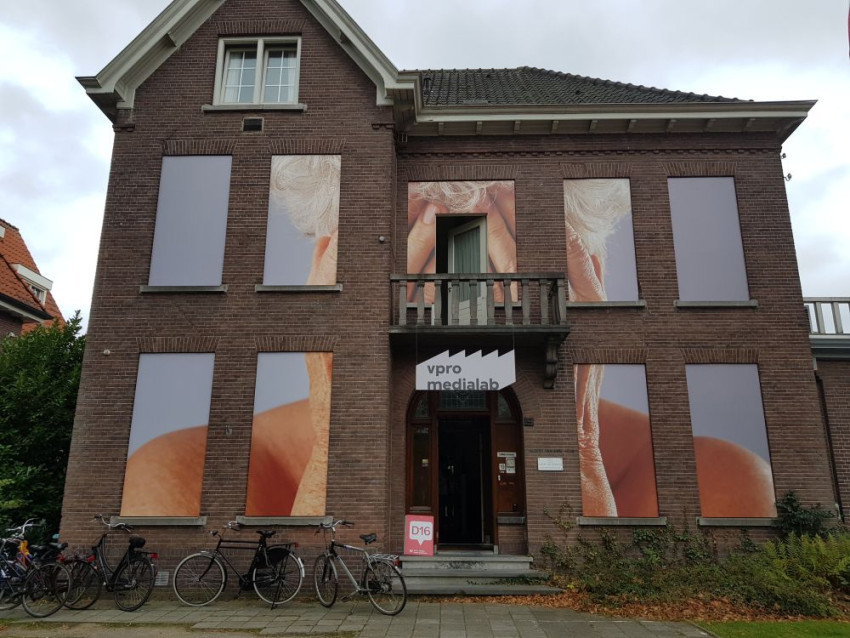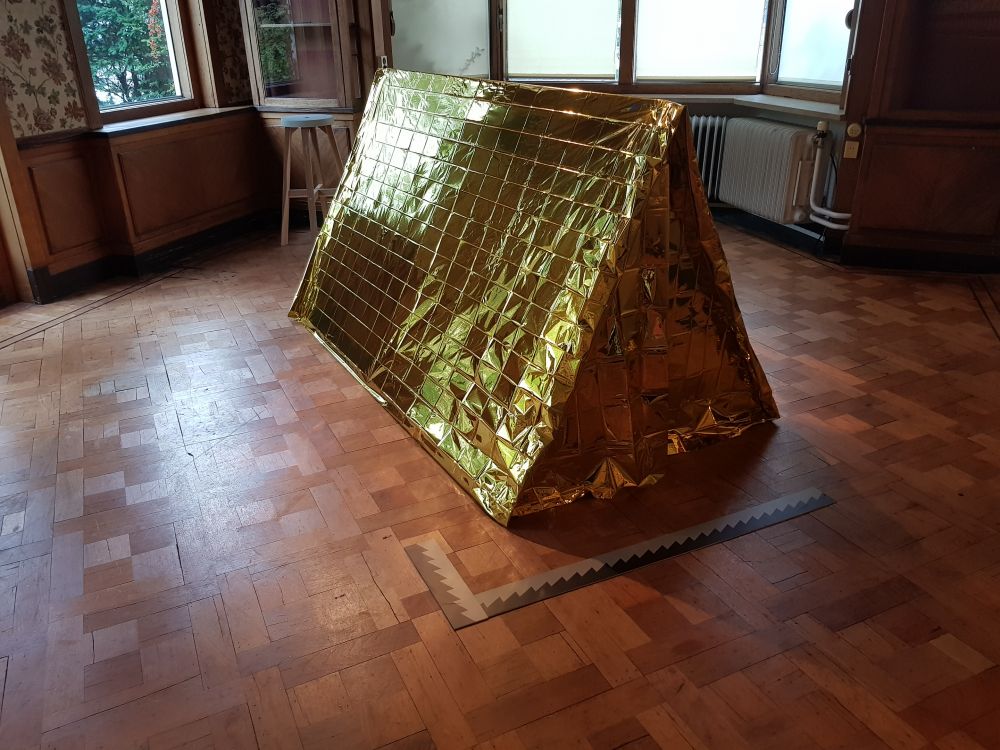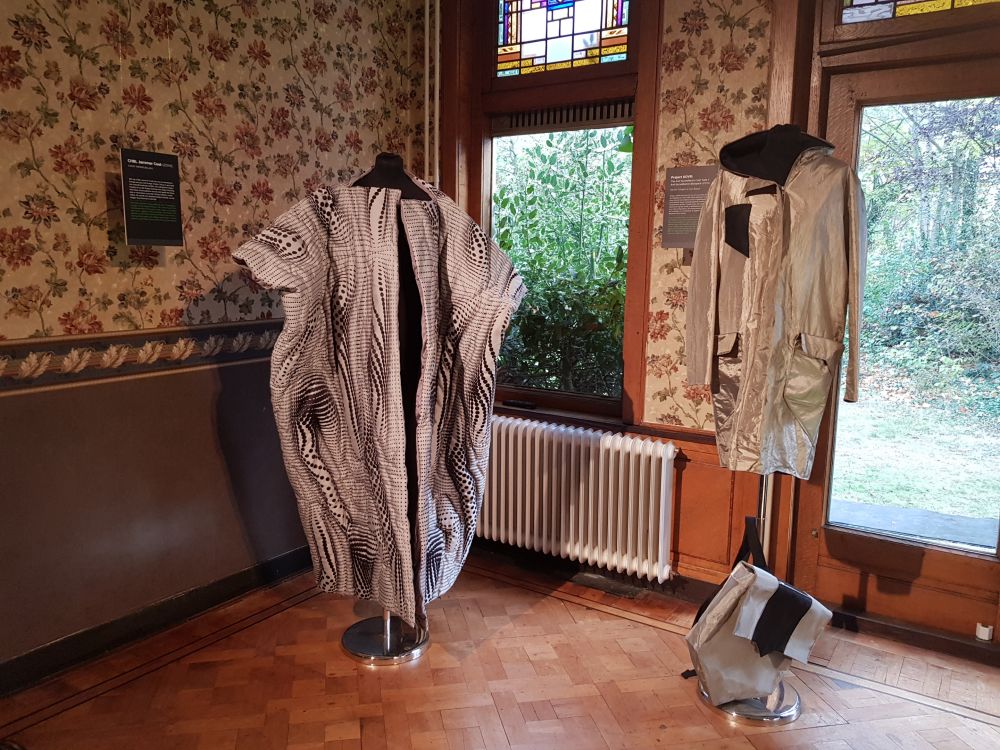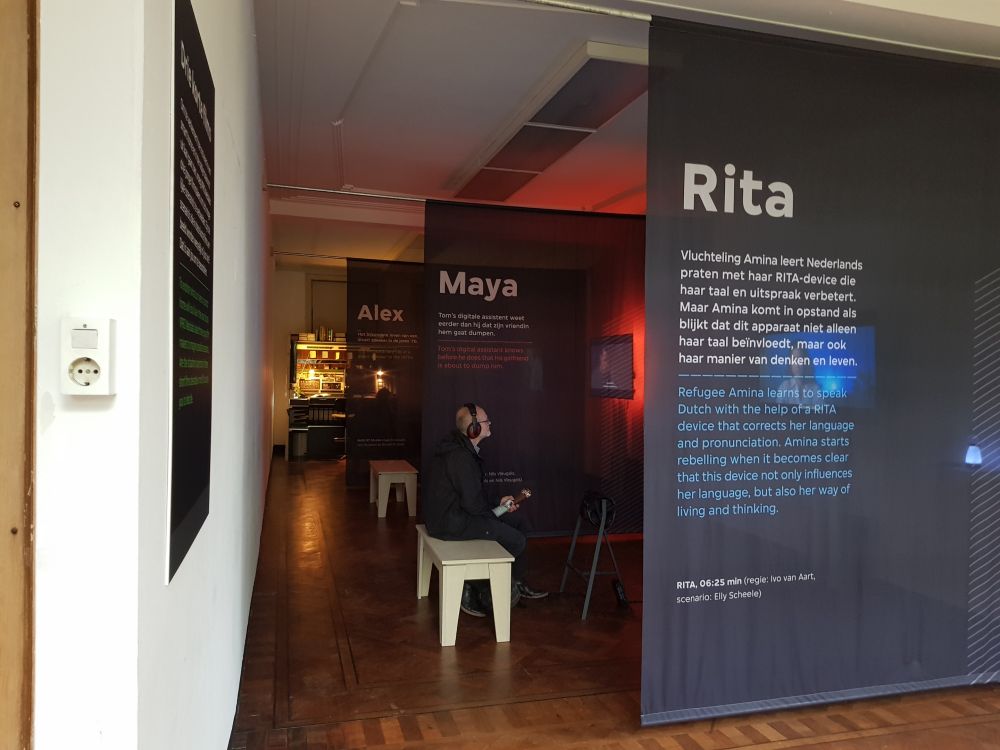
Dutch Design Week: how smart will our homes be?
Domestic appliances are becoming increasingly smarter, and are connected to the internet, but what does this mean for us in our homes? This aspect is the theme of the Home Smart Home exhibition and experience organised by VPRO Medialab during Dutch Design Week.
'Welcome! Great to hear you’ve registered as a SomeBuddy.' These words introduce the Home Smart Home experience, organised by VPRO Medialab in the Albert van Abbehuis art gallery. SomeBuddy is a volunteer visiting elderly people, who usually receive support from an Artificial Intelligence device. An awkward collaboration between man and computer ensues, an interactive challenge as it were.
SomeBuddy
 On entering, all mobile devices are to be handed in, before participants are sent into Ellis’ home armed with a smartphone and headphones. Support comes in the form of virtual assistant Sam. Ellis is an 85-year-old woman who receives support from another virtual assistant, called Alex. In Ellis’ home, almost everything is automated, and controlled by Alex. While such virtual assistants might initially feel like a pillar of support, it quickly becomes clear that their communication doesn’t always run smoothly. Ellis is nowhere to be seen, because the smart devices didn’t register all the important information after all, and have lost sight of her.
On entering, all mobile devices are to be handed in, before participants are sent into Ellis’ home armed with a smartphone and headphones. Support comes in the form of virtual assistant Sam. Ellis is an 85-year-old woman who receives support from another virtual assistant, called Alex. In Ellis’ home, almost everything is automated, and controlled by Alex. While such virtual assistants might initially feel like a pillar of support, it quickly becomes clear that their communication doesn’t always run smoothly. Ellis is nowhere to be seen, because the smart devices didn’t register all the important information after all, and have lost sight of her.
Human contact
I’m becoming more and more curious about Ellis. What does she look like, and what has her life been like so far? However, these questions remain unanswered, as the devices monitor other things, especially those that can be measured. And so the most important issues actually raised by this experience are: Can an automated system really provide care? And how important is human contact?
Online vs. offline

The accompanying exhibition emphasises the difference between the offline and online worlds. Devices like Alexa and Google Home can control everything in people’s homes, from music players to the TV, and from the tap to the toothbrush. That seems really convenient, but is it genuinely so? The fact is, all these devices also store data, and the purposes for which it is used are often unclear. Is it still possible to have no digital footprint, to completely shut yourself off from the online world? Artists at the exhibition are showing some fascinating solutions. Sarah van Sonsbeeck, for example, has made a tent to protect against the heat seekers of drones. And Coop Himmelb(l)au has created a jacket that makes you invisible and untraceable for Google.

Three movies
To complete the story, three short movies are shown about living with a virtual assistant. The first one is about a refugee learning Dutch from a virtual assistant. This might seem like a good idea, but what if this robot is also trying to change the student’s lifestyle, along with her language? In the second film, the makers take things a step further. Imagine your virtual assistant knew that your girlfriend was going to break up with you before you did? The third film looks at the impact of human actions using a (fictional) image of how a virtual assistant would have worked in the 1970s. A man in a cupboard is there to answer your questions. But what if the occupant of the house is choking to death on a nut? In such a situation, humans are a lot more helpful than a stationary robot. (Linda Bak)

If you found this article interesting, subscribe for free to our weekly newsletter
Meer artikelen

Een AI-fabriek in Groningen

Gezondheid meten via zweetdruppels
Nieuwste artikelen

Een AI-fabriek in Groningen






